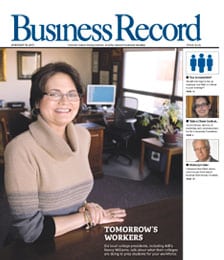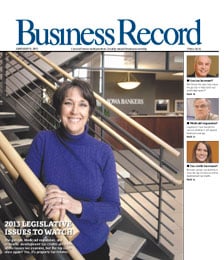These bonds might just be the ticket

Dear Mr. Berko:
I would like to buy two convertible bonds that yield 10 percent or better and have the potential to double or triple my money in the coming two years. I have between $10,000 and $14,000 to invest, and I am able to put all this money at risk.
R.A., Fort Walton Beach, Fla.
Dear R.A.:
If you are stout of heart, then these two issues may be right for you. I think Lucent Technologies, one of the many spawn of Ma Bell, will survive. So I would buy $10,000 face value of the Lucent 8 percent corporate bonds that mature in May 2015. Those bonds trade at between $640 and $650 per $1,000 face value. A purchase of 10 of these bonds would cost you $6,500 but it will pay you $800 a year in interest income, which is a 12.3 percent current return. Now, let’s make this bond a hybrid “super-size” convertible. To do so, I would like you to purchase 1,000 shares of Lucent common stock (LU-$1.47), which would cost you $1,470. So you now have a total of $7,970, producing an annual $800 income that is a current return on the hybrid convertible of 10 percent.
I think LU’s new chairman, president and chief executive officer, Patricia Russo, is going to turn this company around and restore some semblance of its former glory. Two years ago, LU had $22 billion in revenue and last year posted $12 billion in revenues; it lost $5.11 and $3.39 a share those years, respectively.
The company is one of the world’s leading designers, developers and manufacturers of telecommunications systems, software and related products. Demand is weak, capital spending will be cut by 20 percent to 30 percent this year and the short-term outlook continues to be lousy. As a result, LU’s revenues will probably fall to the $9 billion level this year and the company expects to lose about 40 cents a share. That’s a huge improvement from the two previous years.
However, 2004 might hold promise for LU, as many communications companies will have to upgrade and replace old equipment. Therefore, some on Wall Street reckon that LU may report a small third/fourth quarter profit in 2004 and possible strong profits in 2005. There are 36 suits on the Street who follow the stock. Eight suits have a buy on the stock, 23 rate it a hold and two recommend a sell.
Now consider Mirant Corp. 5.75 percent convertible bonds, which are BB rated and mature in July 2007. These convertibles trade between $400 and $420 per $1,000 face value. Ten of these bonds would cost $4,200 and the $575 in interest income computes to a yield of 13.7 percent. Ten of these bonds convert into 140 shares of the common stock. So let us “super size” the convertible and purchase 1,000 shares of Mirant (MIR-$1.72) common stock for $1,720. Now your total cost (the bond plus the common stock) is $5,920 and pays you $575 in interest. That is still 9.7 percent and, like Lucent, I think there is some good long-term upside potential. Mirant, which was formerly Southern Energy, was spun off from Southern Co. It began trading in January 2001, reaching a high of $47 a share that year. This is a global independent power company with operations in North America, Europe and Asia. The company buys and sells electricity, natural gas, coal and oil from and to power producers all over the world. Revenues in 2001 were $13 billion and in 2002 grew to $31 billion. MIR earned $1.24 a share in 2001 and $1.68 a share in 2002.
The company’s solvency is in question and its ability to survive hinges on management’s ability to restructure its debt and debt maturities. Some suits feel that MIR will successfully renegotiate its debt and Standard & Poor’s thinks MIR will earn between 50 cents and 77 cents a share. Of the 13 suits who follow the stock, one recommends a buy, 11 suggest the shares be held and one thinks it ought to be sold.
Please address your financial questions to Malcolm Berko, P.O. Box 1416, Boca Raton, Fla. 33429 or visit his Web site at www.berkoradio.com.







